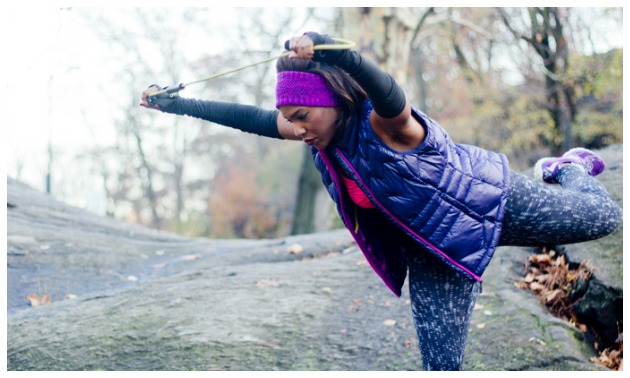
If you’re looking for a new way to tone up then I suggest you dust off your high school notes from physics class. That’s right, those complicated formulas can and totally should be used during your sweat sessions today. Don’t worry, there won’t be a pop quiz this time around. Instead keep reading and get ready to test your physical limits by applying these scientific principles to your future workouts.
Lesson #1: It’s Okay To Be Unstable In Fitness
Unstable in life, not so much. However when it comes to your sweat sessions don’t be afraid to shake things up. Due to the biomechanics of stability, anytime you challenge your balance your body has to work harder, and the harder you work the faster the results. So next time you’re doing upper body exercises balance on one leg or make things super challenging by working on an unstable surface such as a Bosu Ball. Not ready to exercise flamingo style? Then make any strength move more challenging by narrowing your base. For instance bring your hands close together during push ups or your feet close together during squats.
Lesson #2: Don’t Go With The Flow
Easy breezy personalities are RAD, however going with the flow in the gym instantly makes things easier. So in order to tone up quicker I suggest inviting two subtle yet challenging forces to the party: wind and incline. Next time you head out for a run or a bike ride don’t be afraid to ride into the wind or up hills. Doing so requires more energy to overcome the resistance which in turn burns more calories. Mimic these conditions in the gym by setting the treadmill or stationary bike on an incline.
Lesson #3: Lengthen Your Levers
Our muscles, bones and joints act as a system of levers that ultimately allow us to move heavy or light loads. Therefore the further the distance between the object you are lifting (for example dumbbells) and the joint that’s moving, the more intense the exercise becomes. For instance lateral raises with 10 pound weights are much more challenging than bicep curls with the same amount of weight simply because your arms are fully extended. So next time you’re looking to up the ante try extending your levers (arms and legs) before adding resistance.
Lesson #4: Twist And Shout
A common mistake that most exercisers make is only moving on two geometric planes – the sagittal (up and down, and front to back) and the frontal (side to side). However one sure way to incorporate more muscles and accelerate your results is to learn how to twist. Doing so invites the transverse plane to the party which is great since this is more in tune with how we naturally function (think walking). So next time you’re doing body weight squats don’t be afraid to add a twist at the end by bringing your opposite elbow to your opposite knee in between reps.
Lesson #5: Stride With Pride
If you’re a runner (newbie or veteran) then the physics lesson for you is Newton’s third law of dynamics. When your foot hits the ground (or the treadmill), you apply a force to the ground, which responds with an equal and opposite force, helping you to propel forward. Therefore working to improve your stride can help each and every run feel less taxing, which can ultimately help you improve both your speed and endurance (sans injury). Think small quick steps that are initiated from your hips as opposed to long wide strides that are powered by the front of your legs.

No responses yet